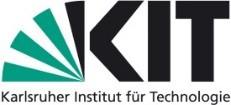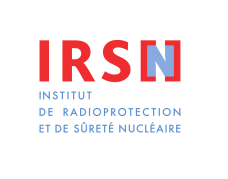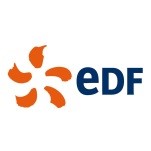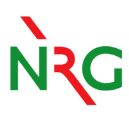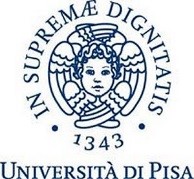Probabilistic Safety Assessment (PSA) of Natural External Hazards Including Earthquake was the subject of a workshop organized by OECD/NEA Committee on the Safety of Nuclear Installations in June 2013 where several areas of improvement have been identified. To follow the conclusions/recommendations of this workshop, the main objective of NARSIS is to bring sound contributions to the safety assessment methodologies by reviewing, analyzing and improving some aspects relative to:
- external hazard events, potentially including events arising from combination of hazards, frequency estimation of high intensity low probability events and re-evaluation of screening criteria,
- modelling of the structure response to external aggressions and introduction of new concept of fragility surfaces, correlation effects and consequent damage scenarios,
- theoretical development for constraining Expert Judgment, treatment of parameter, model and completeness uncertainties, development of methods based on Bayesian model and Human Reliability Analysis, and
- Level 2 PSA aspects of external hazards risk analysis including evaluation of accident management measures in case of external events.
The global concept of the proposed project NARSIS consists in providing scientific framework to address some of these issues not only from theoretical point of view but also by effectively applying the results at the demonstration level. More precisely, NARSIS project put together three interconnected components:
- theoretical improvement in scientific approach of natural hazards assessment and their impacts including advance in evaluation of uncertainties and reduction of subjectivity in expert judgments;
- validation of the findings in the frame of the safety assessment through adequate model reduction, simulations and experimentations and finally,
- application of the outcomes at the demonstration level by providing supporting tools for sever accident management.
To reach this goal, NARSIS will rely on a multidisciplinary approach. Indeed, the complexity of the nuclear environment makes safety assessment increasingly difficult by extending the scope of investigations. The appropriate method for building the most likely successful project in this area is that which effectively integrates knowledge from various scientific disciplines and practitioners’ experiences. NARSIS project mirrors this fact through the composition of its consortium that encompasses leading universities, research institutes, TSOs, nuclear power producers and suppliers, reactor designers and operators. The work is characterized by efficient involvement of high-level experts from several disciplines, such as geology and other earth sciences, physics, mathematics, civil and structural engineering, modeling and computing having a common understanding of the concept of safety.
The improvement in characterization of potential physical threats due to different external hazards and building scenarios related to these hazards are the first concern of the NARSIS project. Applying lessons learnt from FUKUSHIMA accident, all potential external hazards should be evaluated. Therefore, we propose a comprehensive classification method after analyzing the processes from initiation to consequences and develop common process to select the most appropriate evaluation in terms of frequency but also severity and impacts. The framework for an integrated analysis will provide means for assessing the risk associated with external hazards based on graded screening approach that will also minimize analytical effort.
Based on theoretical developments, the NARSIS project aims at making significant leap forward in scientific approach to reactor safety by proposing updates of some elements required for the safety assessment. These advances would concern three main domains:
Objective 1: Improvement on characterization of natural external hazards and consideration of concomitant external events, either simultaneous-yet-independent hazards or cascading events.
Indeed, hazards are currently often taken individually, yet they might occur during a similar period, and their effects can then be exacerbated (e.g. earthquake inducing floods due to dikes leakages). The NARSIS project will therefore propose a unique framework to characterize the different events.
Objective 2: Improvement of vulnerability assessment of the elements subjected to complex aggressions and introduction of vector-based fragility surfaces (instead of fragility curves)
Simultaneous events would have conjunct effects on the responses of the structures and the different components of the Nuclear Power Plant (NPP). Furthermore, the combination of different external aggression mechanisms could take place within a single event, with for instance, the coexistence of different strong ground motions phenomena during an earthquake. The NARSIS project will propose new methods to consider several intensity measures (either from a unique or different hazards) in the evaluation of the response of the structures and the critical elements of the NPPS to the external events. Furthermore the response of the structure is also conditioned by the aging effect that will be taken into consideration in the project.
Objective 3: Improvement on the treatment of uncertainties including uncertainties related to the integration of the expert judgment in the PSA.
One of the main difficulties in determining the occurrence frequency of natural external hazards is the lack of reliable observations for those events whose probability should be estimated, since adequate data samples from experience are incomplete or only available for short durations. The results include significant uncertainties irrespectively of the computational method applied. Thus, even if more and more models and techniques allow reducing the importance of expertise in the safety assessment procedures, experts’ judgments are still cornerstones in many steps. In the hazard evaluations, the low probabilities of concerns and the lack of reliable data make the level of experience inadequate. Improvements in the integration could repose on development of experts’ judgment representation, techniques to aggregate several opinions or several sources of information and the evaluation of the uncertainty related to expert-based information. Therefore, the NARSIS project aims at proposing new scientifically based procedures to better constrain the uncertainty related to the knowledge incompleteness, i.e. epistemic uncertainty.
Obviously any improvement of scientific knowledge needs validation through adequate experiments and simulations. To achieve this objective NARSIS will implement and validate a numerical platform based on the definition of a simplified virtual reactor that would be representative of the European fleet. Improvement of existing simulation methods and notably new development related to the model reduction that consists in the projection of the original, high-dimensional, state-space on a properly chosen low-dimensional subspace in order to obtain smaller system having properties similar to the original system will be a part of the expected works in our project. The impact of complex and multiple external aggressions on the physical integrity of the system will be tested using this simulation tool as well as the accuracy and reliability of methodologies developed for enhancing the safety. NARSIS proposes also a set of laboratory hybrid tests consisting in combination of physical experiments and simulation to exploring how individual components and subsystems will behave.
Dernière mise à jour le 06.04.2020









